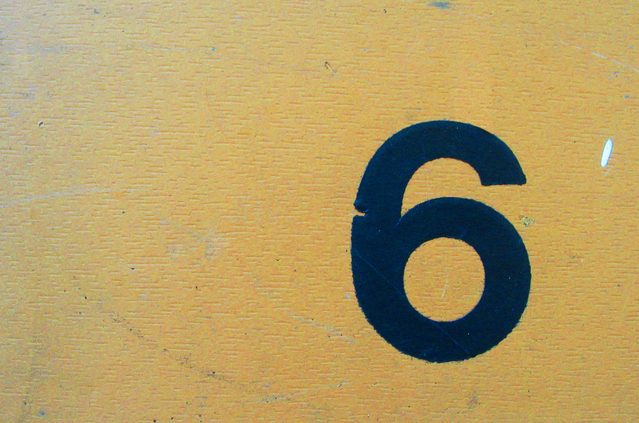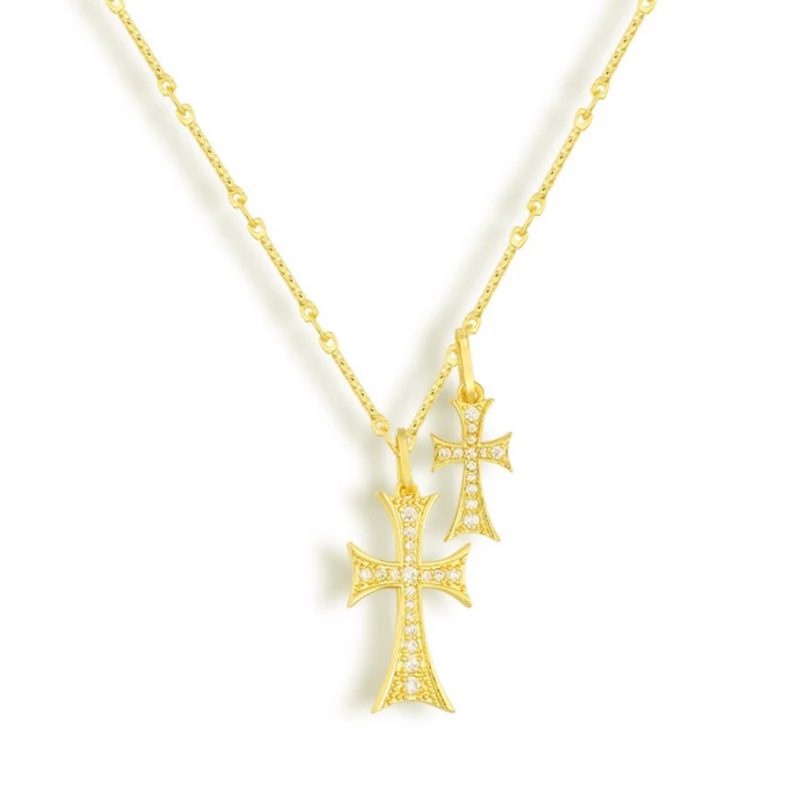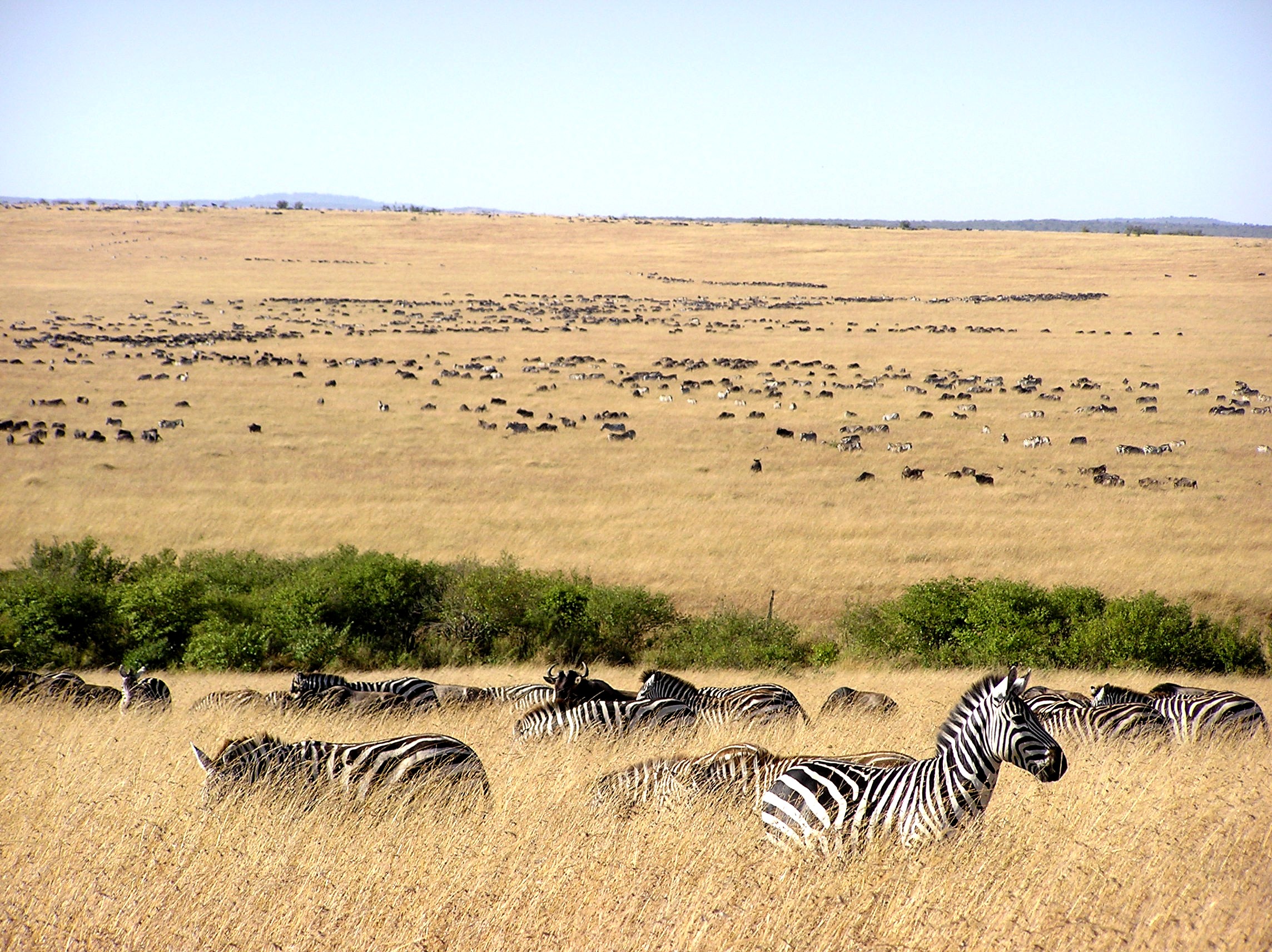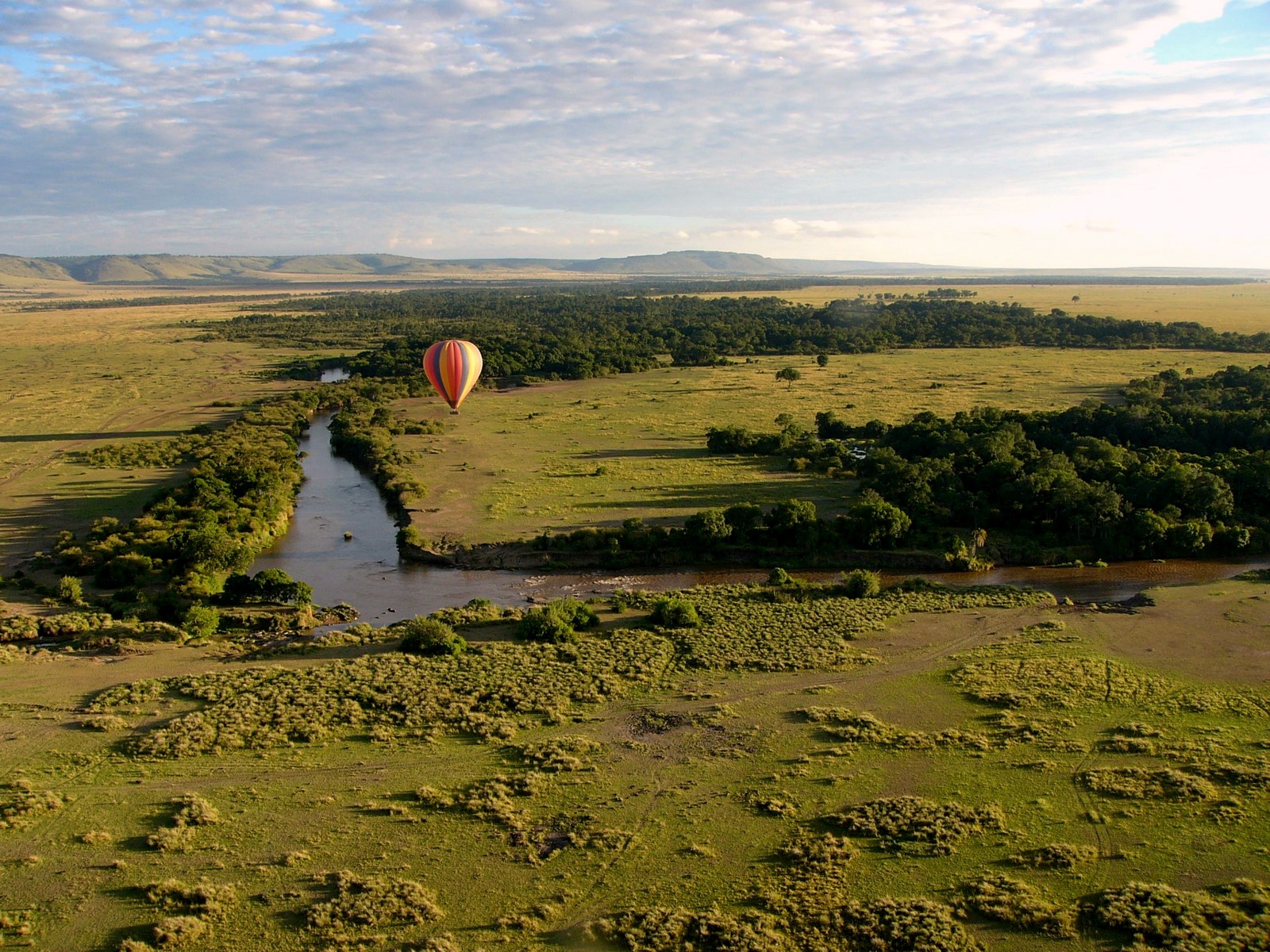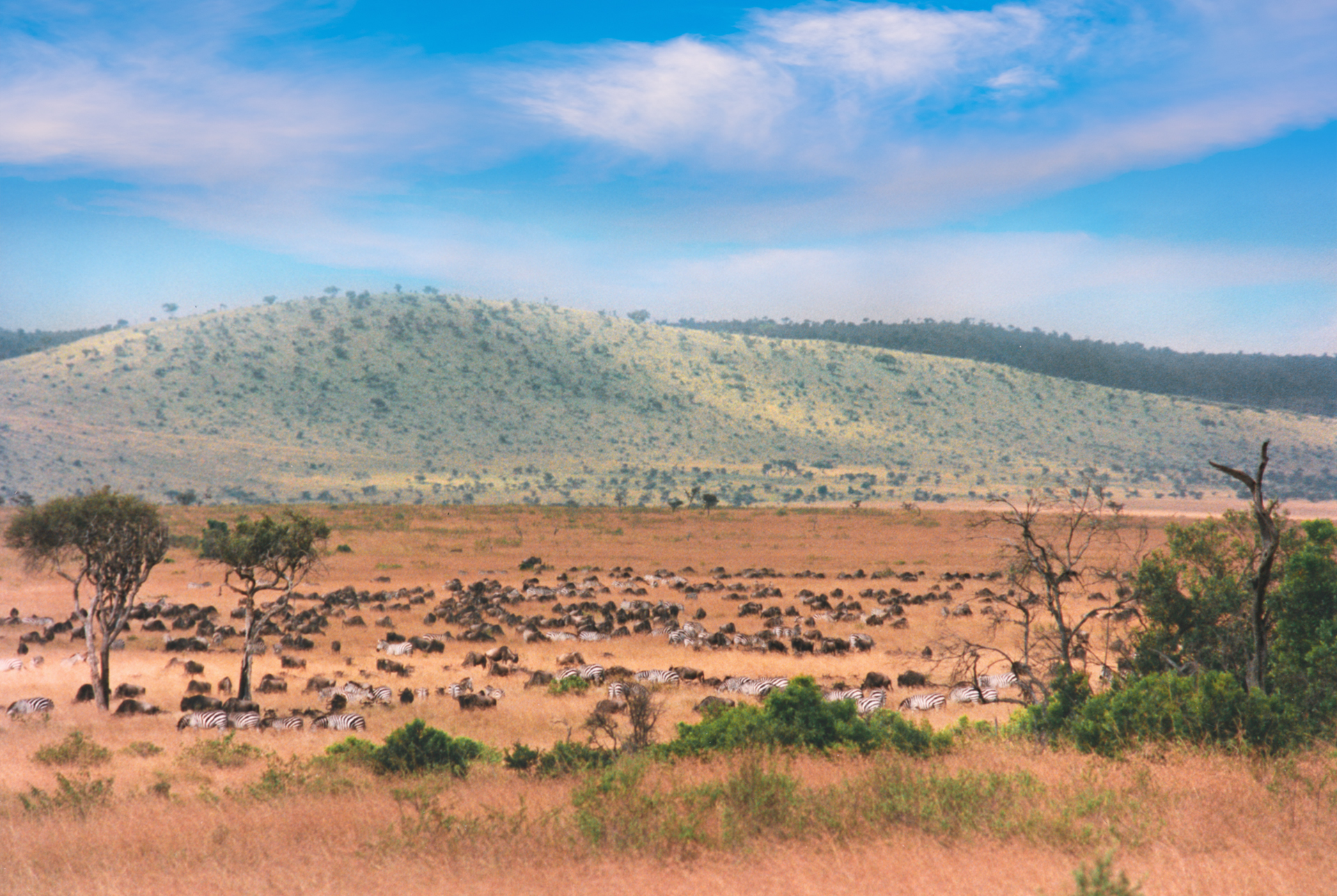6 Iconic Maasai Dressing Accessories
1) Beads
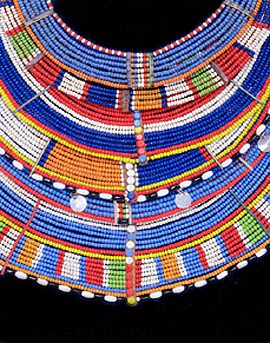
6 Iconic Maasai Dressing
Maasai beads are symbolic to their culture. Furthermore, jewellery made out of Maasai beads is one of the most popular items bought by visitors to Kenya. For hundreds of years, Maasais have handcrafted jewelry using beadwork. Before the arrival of Europeans to Kenya, they used items such as sticks, shells, grass, seeds and other materials as beads which look similar to Maasai beads of today. Maasai beadwork represents the whole of Maasai culture embodying beauty, strength, tradition, marriage, warriorhood, marital status, age set, social situation and their deep love for cattle. Also, beads play a significant role in the bodily ornamentation of Maasais. Males wear beaded bands on their ankles, wrists, waists and necks. Also, women wear colorful clothes decorated with beads. The most common feature is a flat and large disc necklace made of beads using cowhide strips. Furthermore, many modern functional items are made using Maasai beads. The patterns and colors used in these collars indicate the wearer’s tastes. Each color of the beads represents a different aspect of their culture. For example, a black and white pattern shows that the wearer favors zebras. An orange color indicates her love of sunset. Yellow represents hospitality.
2) Collar
The mothers of girls who are about to get married make a distinct wedding necklace. It represents the map of the village. The collar is a large leather circle covered in brightly colored beads in geometric shapes with a square section in the front. The hole in the center represents the heart of the village where they keep the cattle, sheep and goats at night. There are also some beaded strings hanging from it which represent the dowry given by the groom to the bride. Dowry here is cattle. Cowry shells are attached to the bottom which is a symbol of peace. Plaited beadworks represent interconnection between the couple. Each and every part of the collar stands for some aspect of the bride’s community. Women wear similar beaded collars in ceremonies as a sign of beauty and wealth.
3) Shuka
In the olden days, Maasais wore leather garments made out of calf hides and sheepskin. They began to replace these clothes with more commercial materials in the 1960s. Since then, men wear a special red cotton fabric cloth called shuka. Also known as African blanket, Shuka is a red, blue and black striped cloth. They wrap them around the bodies. But the wearer, depending on his personal style, wears it in a variety of ways. It is said to be durable, thick and sturdy preventing Maasais from the harsh terrain of savannah. They believe that wearing red scares away predators. No one knows how shukas came into being. Some believe that Maasais used them as currency for slave trade. Others think that they were introduced by Scottish missionaries. Interestingly, shuka does look like woven patches of Scottish tartan with plaid patterns. These days it is manufactured in Dar es Salaam and China.
4) Decorations
Stretching of earlobes is part of Maasai beauty. Both women and men wear metal hoops on their earlobes. Also, women remove two lower middle teeth. To show that a Maasai has killed another man he wears something called errap around his top arm. They make them using leather with metal wire coils in the front and back. If a Maasai kills a lion, he wears the lion’s mane as a headdress which is called Olawaru. But if the lion survives the fight, he wears a circlet called enkuwaru made of ostrich plumes. Maasai’s hair is a living symbol of their culture and tradition. Women and kids keep their hair shaved and short. Males wear them in red dyed braids. Those who wear plaits prove that they are true Moranis adhering to their traditions.
5) Masks
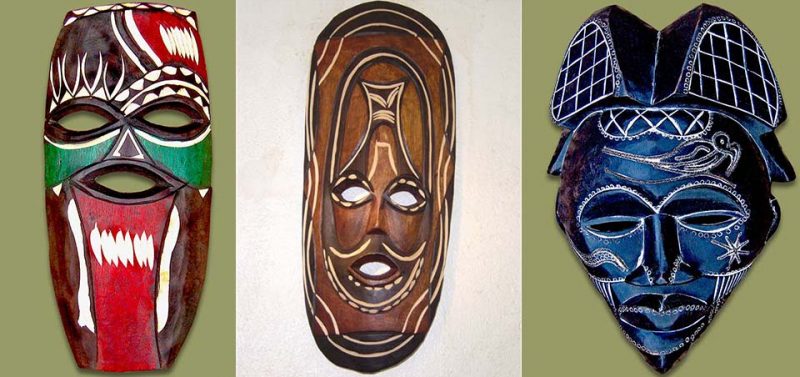 Masks are used in African culture to honor the ancestors, but Maasais use masks in traditional ceremonies such as celebrations, initiations and war preparations to scare their opponents. During such ceremonies, a Maasai member would enter into a deep trance who will then deliver a message from the spirit of an animal or a mythological being. The mask often represents spirits. The member communicates in groans, partial phrases or broken sentences. An elder or wise man usually serves as an interpreter. Today, modernism has done away with such traditional practices and ceremonies. They are often only practiced for tourists after which the masks are sold to provide a livelihood for the artisan or carver.
Masks are used in African culture to honor the ancestors, but Maasais use masks in traditional ceremonies such as celebrations, initiations and war preparations to scare their opponents. During such ceremonies, a Maasai member would enter into a deep trance who will then deliver a message from the spirit of an animal or a mythological being. The mask often represents spirits. The member communicates in groans, partial phrases or broken sentences. An elder or wise man usually serves as an interpreter. Today, modernism has done away with such traditional practices and ceremonies. They are often only practiced for tourists after which the masks are sold to provide a livelihood for the artisan or carver.
6) Shield
Maasais use shields primarily in defense against a lion’s or an enemy’s charge. But it also has a secondary significance. Shields express art and culture. They also function as symbols of identification and prestige objects. They are highly codified and indicate complex lineage identification system. Shields are given to a chosen successor strictly based on merit rather than birth. Markings on a shield convey the status and honor of its owner. Similarly, designs reveal many details about the bearer such as his prowess as a warrior. For example, a red badge signifies bravery in battle and is only painted with a high-ranking chief’s permission. Red shields are for mature warriors while the gray, black or white shields are for younger ones. A white star indicates that the owner has committed an act of bravery.
To receive a colourful digibook about Maasai with videos, images and text, please fill out the following form or simply email us on safaris@safari-center.com

